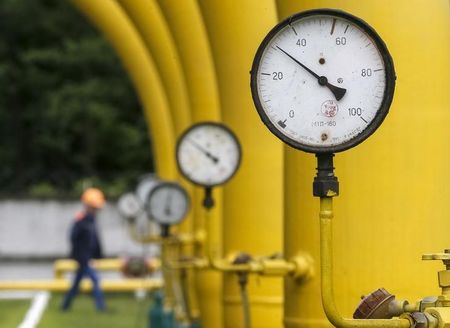
Investing.com — European natural gas prices have been nearing their highest levels for the month due to a faster-than-normal depletion of storage levels and the impending end of the gas transit agreement between Ukraine and Russia.
In early trading on Monday, benchmark futures saw a rise of up to 2.5% before they slightly eased.
Prices are currently just under €48 a megawatt-hour, a rate close to the peak reached in December, as traders assess the potential impact of reduced Russian gas supply into the region in the upcoming year.
The gas transit agreement between Ukraine and Russia is set to end on January 1. This coincides with predicted colder weather across much of Europe, which could lead to increased demand for gas for heating purposes.
The region’s gas inventories are being used up more quickly than usual, which could result in higher costs for traders to secure enough gas for the next year as they compete with Asia for seaborne supplies.
Among the central European nations, Slovakia continues to purchase Russian gas and is advocating for the fuel to keep flowing across Ukraine. However, Ukrainian President Volodymyr Zelenskiy has declined any deal that involves sending money to Russia while the ongoing war persists.
Slovak Prime Minister Robert Fico has called on the European Commission to address the impending halt in gas supply. Fico stated that the economic impact on the European Union would be far more significant than the effect on Russia. In his letter to European Commission President Ursula von der Leyen, Fico highlighted that European households and businesses could face increased bills.
The gas supplies at risk account for approximately 5% of European demand. While this is a relatively small portion of the market, the loss of these volumes would necessitate countries to depend more on piped gas from Norway or liquefied supplies from the United States.
Europe’s gas benchmark, Dutch front-month futures, experienced a decrease of 0.798% to €47.35 a megawatt-hour at 8:55 a.m. in Amsterdam.
This article was generated with the support of AI and reviewed by an editor. For more information see our T&C.
This post is originally published on INVESTING.




